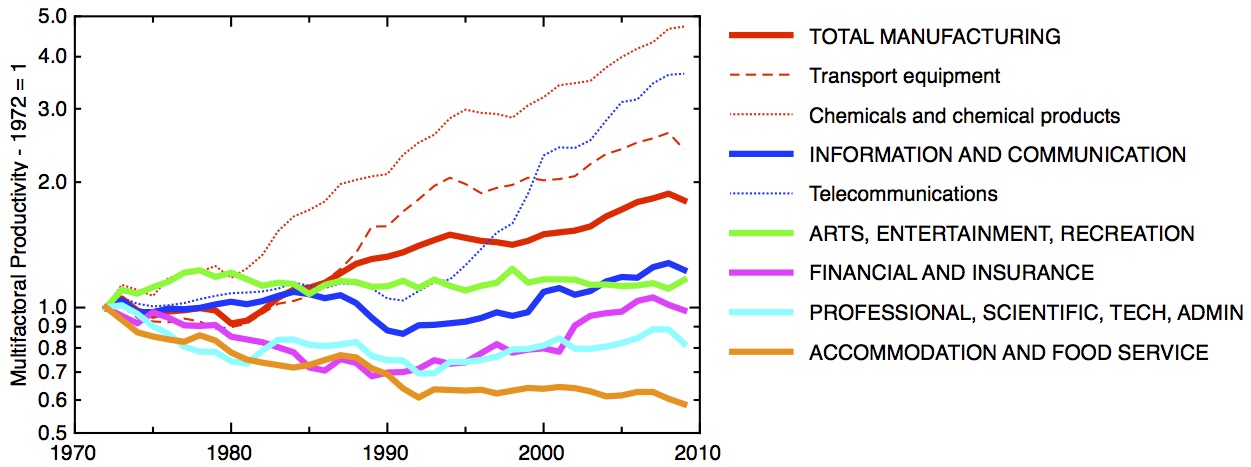Cambridge’s Centre for Science and Policy, where I am currently a visiting fellow, held a roundtable discussion yesterday on the challenges for science policy posed by today’s politics post-Brexit, post-Trump, introduced by Harvard’s Sheila Jasanoff and myself. This is an expanded and revised version of my opening remarks.
I’m currently commuting between Sheffield and Cambridge, so the contrast between the two cities is particularly obvious to me at the moment. Cambridgeshire is one of the few regions of the UK that is richer than the average, with a GVA per head of £27,203 (the skewness of the UK’s regional income distribution, arising from London’s extraordinary dominance, leads to the statistical oddness that most of the country is poorer than the average). Sheffield, on the other hand, is one of the less prosperous provincial cities, with a GVA per head of £19,958. But Sheffield doesn’t do so badly compared with some of the smaller towns and cities in its hinterland – Barnsley, Rotherham and Doncaster, whose GVA per head, at £15,707, isn’t much more than half of Cambridge’s prosperity.
This disparity in wealth is reflected in the politics. In the EU Referendum, Cambridge voted overwhelmingly – 74% – for Remain, while Barnsley, Rotherham and Doncaster voted almost as overwhelmingly – 68 or 69% – to Leave. The same story could be told of many other places in the country – Dudley, in the West Midlands, Teeside, in the Northeast, Blackburn, in the Northwest. This is not just a northern phenomenon, as shown by the example of Medway, in the Southeast. These are all places with poorly performing local economies, which have failed to recover from 1980’s deindustrialisation. They have poor levels of educational attainment, low participation in higher education, poor social mobility, low investment, low rates of business start-ups and growth – and they all voted overwhelmingly to leave the EU.
Somehow, all those earnest and passionate statements by eminent scientists and academics about the importance for science of remaining in the EU cut no ice in Barnsley. And why should they? We heard about the importance of EU funding for science, of the need to attract the best international scientists, of how proud we should be of the excellence of UK science. If Leave voters in Barnsley thought about science at all, they might be forgiven for thinking that science was to be regarded as an ornament to a prosperous society, when that prosperity was something from which they themselves were excluded.
Of course, there is another argument for science, which stresses its role in promoting economic growth. That is exemplified, of course, here in Cambridge, where it is easy to make the case that the city’s current obvious prosperity is strongly connected with its vibrant science-based economy. This is underpinned by substantial public sector research spending, which is then more than matched by a high level of private sector innovation and R&D, both from large firms and fast growing start-ups supported by a vibrant venture capital sector.
The figures for regional R&D bear this out. East Anglia has a total R&D expenditure of €1,388 per capita – it’s a highly R&D intensive economy. This is underpinned by the €472 per capita that’s spent in universities, government and non-profit laboratories, but is dominated by the €914 per capita spent in the private sector, directly creating wealth and economic growth. This is what a science-based knowledge economy looks like.
South Yorkshire looks very different. The total level of R&D is less than a fifth of the figure for East Anglia, at €244 per capita; and this is dominated by HE, which carries out R&D worth €156. Business R&D is less than 10% of the figure for East Anglia, at €80 per capita. This is an economy in which R&D plays very little role outside the university sector.
An interesting third contrast is Inner London, which is almost as R&D intensive overall as East Anglia, with a total R&D expenditure of €1,130 per capita. But here the figure is dominated not by the private sector, which does €323 per capita R&D, but by higher education and government, at €815 per capita. A visitor to London from Barnsley, getting off the train at St Pancras and marvelling at the architecture of the new Crick Institute, might well wonder whether this was indeed science as an ornament to a prosperous society.
To be fair, governments have begun to recognise these issues of regional disparities. I’d date the beginning of this line of thinking back to the immediate period after the financial crisis, when Peter Mandelson returned from Brussels to take charge of the new super-ministry of Business, Innovation and Skills. Newly enthused about the importance of industrial strategy, summarised in the 2009 document “New Industry, New Jobs”, he launched the notion that the economy needed to be “rebalanced”, both sectorally and regionally.
We’ve heard a lot about “rebalancing” since. At the aggregate level there has not been much success, but, to be fair, the remarkable resurgence of the automobile industry perhaps does owe something to the measures introduced by Mandelson’s BIS and InnovateUK, and continued by the Coalition, to support innovation, skills and supply chain development in this sector.
One area in which there was a definite discontinuity in policy on the arrival of the Coalition government in 2010 was the abrupt abolition of the Regional Development Agencies. They were replaced by “Local Enterprise Partnerships”, rather loosely structured confederations of local government representatives and private sector actors (including universities), with private sector chairs. One good point about LEPs was that they tended to be centred on City Regions, which make more sense as economic entities than the larger regions of the RDAs, though this did introduce some political complexity. Their bad points were that they had very few resources at their disposal, they had little analytical capacity, and their lack of political legitimacy made it difficult for them to set any real priorities.
Towards the end of the Coalition government, the idea of “place” made an unexpected and more explicit appearance in the science policy arena. A new science strategy appeared in December 2014 – “Our Plan for Growth: Science and Innovation” , which listed “place” as one of five underpinning principles (the others being “Excellence, Agility,Collaboration, and Openness”)
What was meant by “place” here was, like much else in this strategy, conceptually muddled. On the one hand, it seemed to be celebrating the clustering effect, by which so much science was concentrated in places like Cambridge and London. On the other hand, it seemed to be calling for science investment to be more explicitly linked with regional economic development.
It has been this second sense that has subsequently developed by the new, all Conservative government. The Science Minister, Jo Johnson, announced in a speech in Sheffield, the notion of “One Nation Science” – the idea that science should be the route for redressing the big differences in productivity between regions in the UK.
The key instrument for this “place agenda” was to be the “Science and Innovation Audits” – assessments of the areas of strength in science and innovation in the regions, and suggestions for where opportunities might exist to use and build on these to drive economic growth.
I have been closely involved in the preparation of the Science and Innovation Audit for Sheffield City Region and Lancashire, which was recently published by the government. I don’t want to go into detail about the Science and Innovation Audit process or its outcomes here – instead I want to pose the general question about what science policy can do for “left behind” regions like Barnsley or Blackburn.
It seems obvious to me that “trophy science” – science as an ornament for a prosperous society – will be no help. And while the model of Cambridge – a dynamic, science based economy, with private sector innovation, venture capital, and generous public funding for research attracting global talent – would be wonderful to emulate, that’s not going to happen. It arose in Cambridge from the convergence of many factors over many years, and there are not many places in the world where one can realistically expect this to happen again.
Instead, the focus needs to be much more on the translational research facilities that will attract inward investment from companies operating at the technology frontier, on mechanisms to diffuse the use of new technology quickly into existing businesses, on technical skills at all levels, not just the highest. The government must have a role, not just in supporting those research facilities and skills initiatives, but also in driving the demand for innovation, as the customer for the new technologies that will be needed to meet its strategic goals (for a concrete proposal of how this might work, see Stian Westlake’s blogpost “If not a DARPA, then what? The Advanced Systems Agency” ).
The question “What have you lot ever done for Barnsley” is one that I was directly asked, by Sir Steve Houghton, leader of Barnsley Council, just over a year ago, at the signing ceremony for the Sheffield City Region Devo Deal. I thought it was a good question, and I went to see him later with a considered answer. We have, in the Advanced Manufacturing Research Centre, a great translational engineering research facility that demonstrably attracts investment to the region and boosts the productivity of local firms. We have more than 400 apprentices in our training centre, most sponsored by local firms, not only getting a first class training in practical engineering (some delivered in collaboration with Barnsley College), but also with the prospect of a tailored path to higher education and beyond. We do schools outreach and public engagement, we work with Barnsley Hospital to develop new medical technologies that directly benefit his constituents. I’m sure he still thinks we can do more, but he shouldn’t think we don’t care any more.
The referendum was an object lesson in how little the strongly held views of scientists (and other members of the elite) influenced the voters in many parts of the country. For them, the interventions in the referendum campaign by leading scientists had about as much traction as the journal Nature’s endorsement of Hilary Clinton did across the Atlantic. I don’t think science policy has done anything like enough to answer the question, what have you lot done for Barnsley … or Merthyr Tydfil, or Dudley, or Medway, or any of the many other parts of the country that don’t share the prosperity of Cambridge, or Oxford, or London. That needs to change now.

